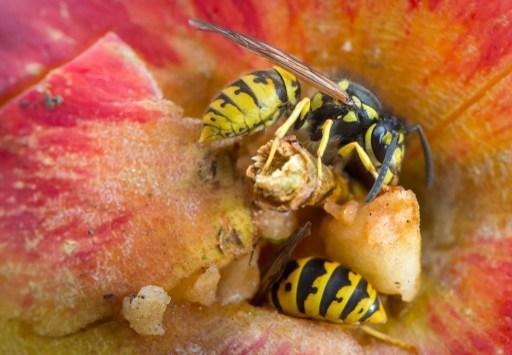The start of summer this year has seen the appearance of a multitude of wasp nests, throughout Belgium. Moreover the cause of this is the particularly hot weather, favourable to insect breeding, which has enabled the proliferation of their predators including wasps. Indeed a good thing, says one entomologist from Natagora (a nature conservation organisation). Wasps enable the natural regulation of the ecosystem. However, do be careful not to confuse wasps and bees, bees being a protected species.
Jean-Sébastien Rousseau-Piot, an entomologist from Natagora, begins, “Wasps are predators. If there are few insects, there will also few wasps.” The particularly high summer temperatures have enabled these various species to flourish. The consequence of this is that wasp nests are emerging throughout Belgium. He goes on, “Most often they make their nest in man-made constructions. So that the nest has something to cling to, it must stick to a rough surface, such as wood, brick or similar... If there is a wasp’s nest in a very busy location, this is certainly annoying. However, if we set about eliminating them in significantly large quantities, we will find ourselves having an imbalance within nature with amongst other aspects, for example, an overpopulation of mosquitoes.”
A number of initiatives have been implemented to promote the development of bee populations, which are protected, enabling them to flourish. However, people can have an element of difficulty differentiating bees from wasps. The problem occurs less often with hornets due to their size.
The entomologist adds, “The bee can be a little smaller and a little larger. Now, it is not always easy to recognise. There are nearly 400 types. Some are like wasps for the purpose of removing predators.” We can state that wasps have a yellow and black lined pattern with a pronounced size, and hornets generally are more red and black with a size which is double that of the wasp. “Hives only serve the needs of domestic bees whilst insect houses or shelters also enable wild bees to take up residence.”
Nectar-containing plants also enable all of these species to develop further. Jean-Sébastien Rousseau-Piot concludes, “Wasps are opportunist. They have large adaptive capacities. They are therefore enabled to survive within our environment. In all cases, use a professional. They will know how to differentiate the species and take the appropriate action without harming nature. The chemicals in pesticides can also be transmitted to other species. On the other hand, you can easily find tricks and gimmicks on the Internet to avoid the formation of a so-called ‘Vienna nest.’ In view of the particularly pleasant temperatures, these predators may continue to build a multitude of nests this summer.
The Brussels Times

